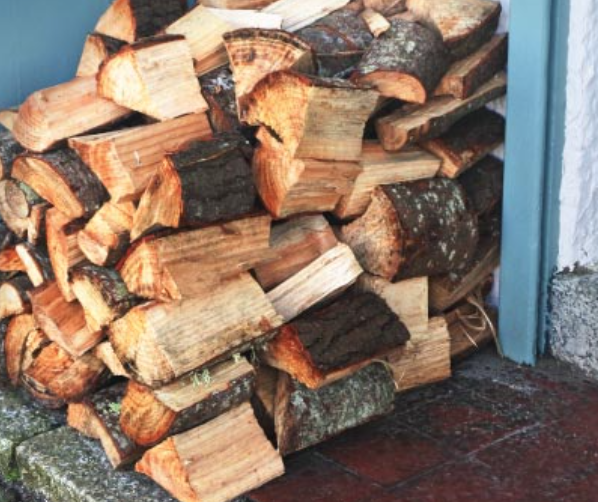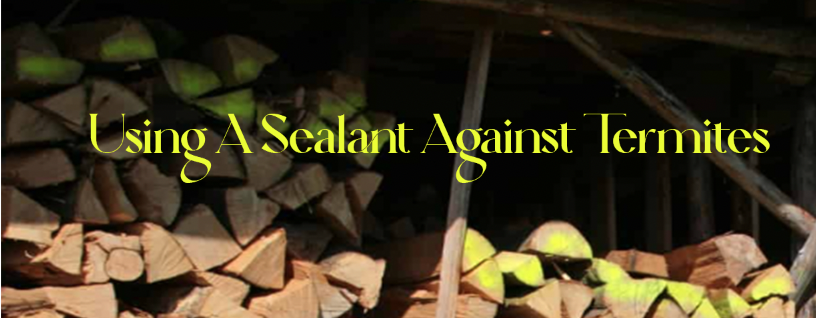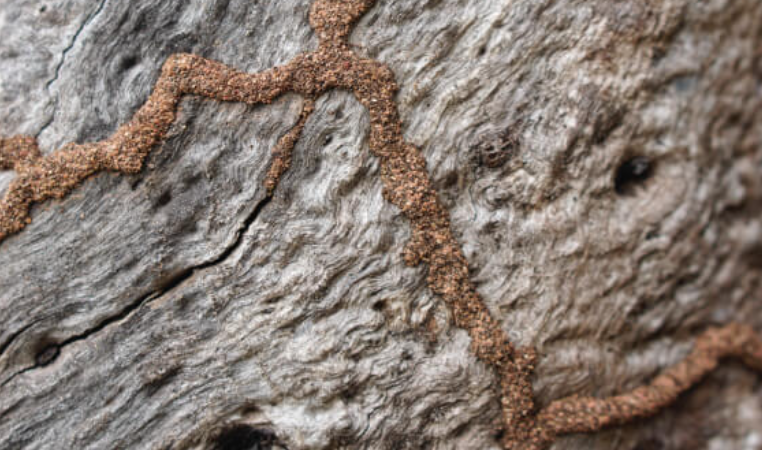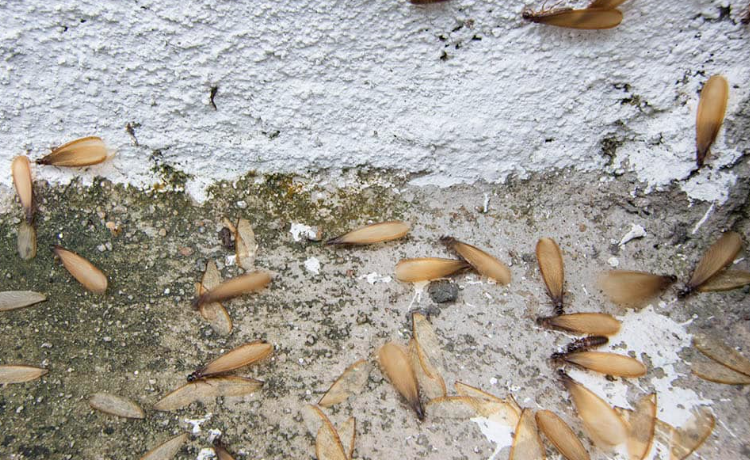Storing firewood properly and safely is essential to avoid attracting termites and other insects. Termites are attracted to wood, and firewood can provide them with an ideal environment to thrive. In this article, we will provide you with practical guidance on how to store firewood to avoid termite infestations.

How To Store Firewood To Avoid Termites
Behavior and Habits of Termites
It’s general knowledge that termites are social insects; they live in colonies and feed on wood and, of course, other cellulose materials, such as paper and cardboard. Termites are attracted to damp/moist environments, and they can cause significant damage to wooden structures. Firewood can provide an ideal environment for termites to thrive, especially if stored improperly.
Ideal Location for Storing Firewood
The ideal location for storing firewood is a dry and well-ventilated area, ensuring it’s away from potential termite entry points (more on this in a bit) or infestation-prone areas, as discussed. This could be in your garage, a shed, even a covered/roofed patio will do, as long as it is not near any soil where termites may be present.
It is also important to elevate the firewood off the ground; this is to prevent moisture buildup underneath and, subsequently, termite access.
Here are some additional important tips to consider when choosing an ideal location for storing firewood:
- Choose a location easily accessible: This one is a no-brainer, but make sure the location of your choice is easily accessible so you don’t have to carry firewood too far. When doing this, also keep in mind the 2nd option below.
- Avoid storing firewood near your home: Storing firewood near your home can increase the risk of termite infestations, especially when they are not properly stored. It’s best to store firewood at a location that is at least 20 feet away from your home or any other inhabitable property.
- Avoid storing firewood on the ground: Storing firewood on the ground can cause moisture buildup and attract termites. It’s best to elevate the firewood off the ground using a firewood rack or other suitable method. You can purchase one from here.
- Choose a well-ventilated location: Proper ventilation is essential to prevent moisture buildup and termite access. Make sure your chosen location is well-ventilated to allow for proper air circulation in all seasons.
- Consider using a cover: Covers can be utilized to protect the firewood from moisture and other pests. They should be placed over the firewood stack, leaving the sides open for proper ventilation. You can purchase one from here.
How To Store Firewood To Avoid Termites – What are termite entry points?
Termites can enter a house through various entry points. Subterranean termite workers, for instance, gain access to homes by building mud tubes that serve as a cooler by trapping water, thereby providing them a moist, which acts as a protective passageway to get from one location to another and your house.
These sneaky insects gain access to homes through a network of underground tunnels called exploratory tubes. These tubes, built by worker termites, act as highways, leading them towards your foundation or the underlying slab. Once they reach these areas, they become construction crews, searching for any crack, gap, or weakness that allows them to breach the barrier and enter your home.
Mud tubes, their signature calling card, are often constructed afterward to provide a protected pathway to wooden structures.
But their entry points aren’t limited to the foundation. Patios, porches, sidewalks, steps, and even chimneys built close to the foundation wall become potential gateways if cracks or gaps exist at the joints.
Additionally, siding buried underground offers another opportunity for these cunning invaders to silently enter, building their mud tubes behind it and remaining undetected until they reach the house itself.
Termites aren’t picky about their entry points. Any external wood source, like a trellis or planter box, can become a launching pad. They infiltrate the wood, construct mud tubes through it, and eventually find a suitable opening to burrow into your home, leaving you none the wiser until it’s too late.
Remember: Vigilance is key! Be aware of these potential entry points and regularly inspect your foundation, exterior walls, and any attached structures for signs of termite activity. Early detection can save you from time-consuming, costly repairs and structural damage.
How To Store Firewood To Avoid Termites – Storage Options and Methods
- Firewood racks: Firewood racks are an effective way to store firewood off the ground and allow for proper ventilation. They come in various sizes and materials, such as metal, wood, or plastic. They are easy to assemble and can be placed in a dry, well-ventilated area away from potential termite entry points. Firewood racks are also ideal for stacking firewood neat and organized.
- Covers: Covers can be used to protect the firewood from moisture and other pests. They come in various sizes and materials, such as vinyl, canvas, or plastic. Covers should be placed over the firewood stack, leaving the sides open for proper ventilation. Covers can also be used in conjunction with firewood racks for added protection.
- Sealants: Sealants can be applied to the ends of the firewood to prevent moisture buildup and termite access. They come in various forms, such as wax, paint, or spray. Sealants should be applied to the ends of the firewood immediately after cutting to prevent moisture buildup. They can also be reapplied periodically to maintain their effectiveness.

How To Store Firewood To Avoid Termites – Moisture Control
Moisture control is essential to prevent termite infestations. Wet or decaying wood can attract termites and other pests. Here are some tips to control moisture:
- Elevate the firewood: Elevating the firewood off the ground using a firewood rack or other suitable method can prevent moisture buildup and termite access.
- Stack the firewood loosely: Stacking the firewood loosely allows for proper airflow and ventilation, thereby preventing moisture buildup.
- Avoid stacking the firewood too high or too tightly together: Stacking the firewood too high or too tightly together can cause moisture buildup and attract termites.
How To Store Firewood To Avoid Termites – Regular Inspections and Signs of Termite Activity
Regular inspections are essential to detect termite activity early. Signs of termite activity include mud tubes, termite droppings, and discarded wings. If you notice any signs of termite activity, it is important to take action immediately to prevent further damage.
Step-by-Step Instructions
Here are some step-by-step instructions on how to stack and arrange firewood to minimize termite access:
- Start by selecting a dry, well-ventilated area away from potential termite entry points.
- Elevate the firewood off the ground using a firewood rack or other suitable method.
- Stack the firewood loosely to allow for proper ventilation.
- Avoid stacking the firewood too high or too tightly together, as this can cause moisture buildup and attract termites.
- Cover the firewood with a tarp or other suitable cover to protect it from moisture and other pests.
- Apply sealant to the ends of the firewood to prevent moisture buildup and termite access.
More on Regular Inspections and Signs of termite activities.
Regular inspections are essential to detect termite activity early. According to the US Environmental Protection Agency (EPA), inspections should concentrate on identifying any signs of termite activity in the suspected area. This includes mud tubes, termite droppings (frass), or hollow-sounding wood 1. We recommend conducting periodic inspections of your property to identify early signs of termite activity. Pay attention to wooden structures, crawl spaces, attics, and other vulnerable areas.
Here are some additional tips to consider when conducting regular inspections:

- Check for mud tubes: Mud tubes are a common sign of termite activity. They are made of soil and wood particles and are used as a transport medium by termites to travel between their nest and located food source. Check for mud tubes on the exterior and interior of your home, especially near the foundation.
- Look for termite droppings: Termite droppings, also known as frass, are small, pellet-like droppings that termites leave behind. They can be found near termite entry points, such as windowsills, door frames, and baseboards.
- Tap on wood surfaces: Termites can cause significant damage to wooden structures, making them hollow and weak. Tap on wooden surfaces with a screwdriver or other tool to check for hollow-sounding wood.
- Check for discarded wings: Termites shed their wings after swarming. Discarded wings can be found near windowsills, door frames, and other entry points.
- Pay attention to moisture: Termites are attracted to moist environments. Check for leaks, water damage, and other sources of moisture that could attract termites.

Discarded wings of termites
If you suspect any signs of termite activity, it is important to take action immediately to prevent further damage. Contact a pest control professional to inspect your home and recommend appropriate treatment options. It’s recommended to call pest control professionals to the scene for proper assessment, instead of trying to DIY it yourself by any of the conventional methods like Using Raid spray for example.
How To Store Firewood To Avoid Termites – Expert Opinions And Conclusion
According to pest control professionals, storing firewood properly is essential to prevent termite infestations. Firewood should be stored in a well-ventilated, dry area away from potential termite entry points. Elevating the firewood off the ground and using covers and sealants can also effectively prevent termite infestations.
